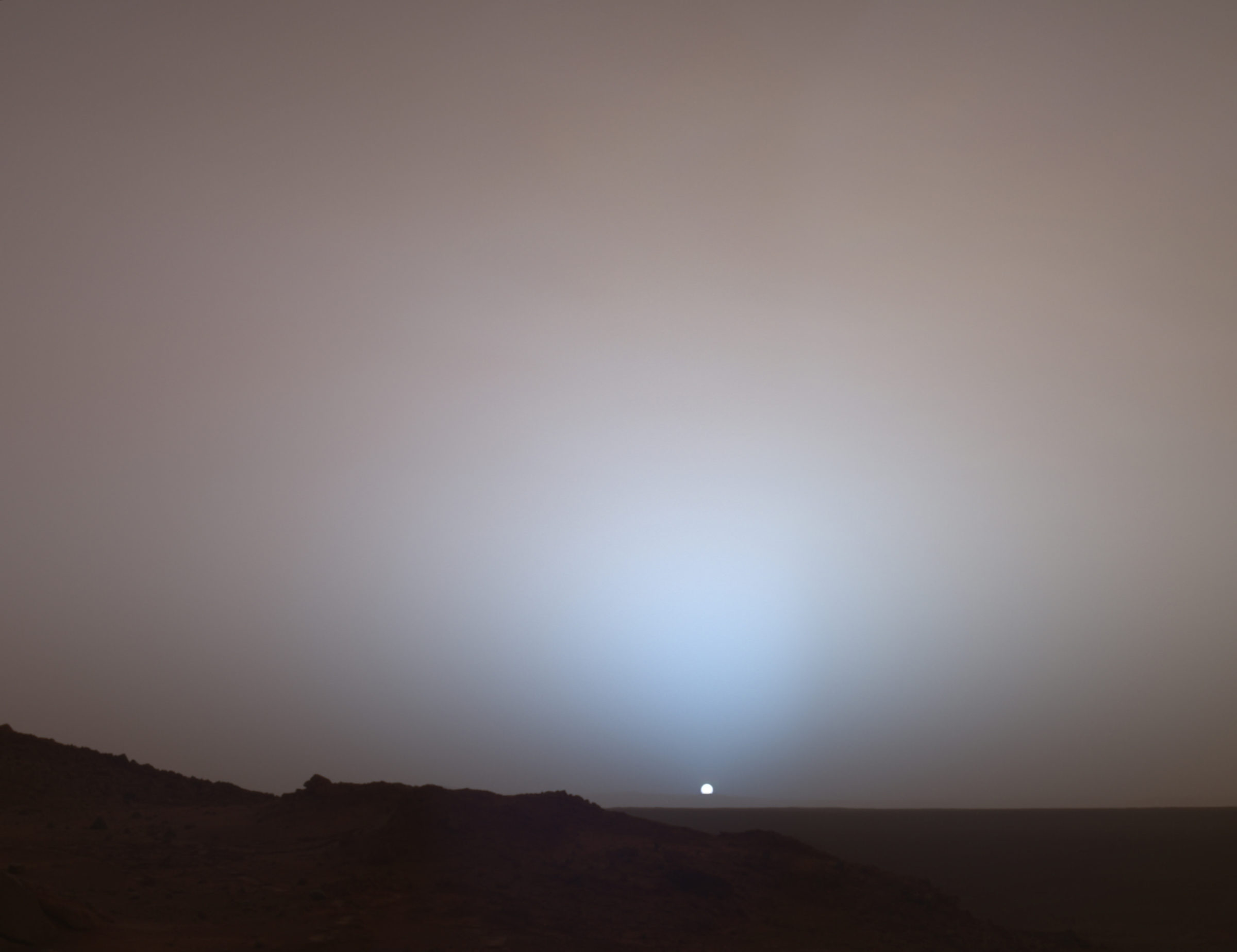Emily Lakdawalla • Jan 05, 2011
Sunset and eclipse on Mars
These two movies were posted to the JPL website a couple of weeks ago, and they are just amazing. I've seen amateur-processed versions of both of these movies using the raw versions of the images, but the videos below, produced and processed by the people who run the rover cameras, are breathtaking. The sunset one especially, how the Sun fades into the dust at Opportunity's horizon, impresses me with how Mars has lively weather and climate yet at the same time is like a dusty tomb for the edifices built by now-dead geologic forces.
The sun descends to the Martian horizon and sets in this 30-second movie simulation using images from the panoramic camera (Pancam) on NASA's Mars Exploration Rover Opportunity
Credit: NASA / JPL / Cornell / Texas A&M
If I am not mistaken, the video below, which shows Phobos transiting the Sun as seen from Opportunity, is in real time; its timing matches a simulation produced a while back by Doug Ellison.
The larger of the two moons of Mars, Phobos, transits (passes in front of) the sun in this approximately true-speed movie simulation using images from the panoramic camera.
Credit: NASA / JPL / Cornell / Texas A&M
Mars Exploration Rover Pancam Images
November 2010, 16:34:23-16:35:00 UTC
Image Sequencing: Emily Dean, Dale Theiling, Elaina McCartney, Jon Proto
Image Processing: Jim Bell, Mark Lemmo
Event Timing: Tom Duxbury
With thanks to the members of the operations and support teams in the NASA/JPL Mars Exploration Program and Deep Space Network
You may be wondering about the blue color of the sky in these images -- isn't Mars' sky salmon orange? The answer is yes, Mars' sky is generally the color of Mars' dust, except when you are looking in a direction close to the Sun near sunrise or sunset. There's a detailed explanation of Mars' sky color here.
As great as those movies are, they still don't top what is possibly my favorite image from the Mars Exploration Rover mission. It's been the desktop image on my Netbook since I bought the machine, and I don't anticipate changing it.

This mosaic is yet another example from MER of a beautiful, sublime martian scene that also captures some important scientific information. Specifically, sunset and twilight images are occasionally acquired by the science team to determine how high into the atmosphere the martian dust extends, and to look for dust or ice clouds. Other images have shown that the twilight glow remains visible, but increasingly fainter, for up to two hours before sunrise or after sunset. The long martian twilight (compared to Earth's) is caused by sunlight scattered around to the night side of the planet by abundant high altitude dust. Similar long twilights or extra-colorful sunrises and sunsets sometimes occur on Earth when tiny dust grains that are erupted from powerful volcanoes scatter light high in the atmosphere.
The Time is Now.
As a Planetary Defender, you’re part of our mission to decrease the risk of Earth being hit by an asteroid or comet.
Donate Today

 Explore Worlds
Explore Worlds Find Life
Find Life Defend Earth
Defend Earth

